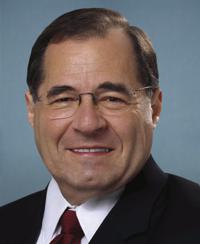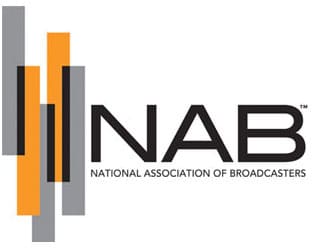Congressional debate over the expiration of the Satellite Television Extension and Localism Act Reauthorization (STELAR) has led the NAB to respond to what it calls “non-answers” from the nation’s two direct broadcast satellite (DBS) providers.
The NAB stepped up in response to responses sent to Democratic Rep. Jerrold Nadler of New York and Georgia Republican House Member Doug Collins.
Nadler is the Chairman of the House Judiciary Committee, while Collins is the ranking member. The representatives sent letters to AT&T-owned DirecTV and DISH Network Corp. asking each company several questions related to the expiration of STELAR. They noted that “this Committee must evaluate whether (STELAR) should be allowed to sunset.”
DISH’s response can be found here. It largely says that due to “competitively sensitive information,” it can’t share the total number of DISH subscribers that currently receive one or more stations through a distant signal license pursuant to 17 U.S.C. Section 119.
The same reasoning was given as to why DISH isn’t able to provide the breakdown by each statutory provision of subscribers receiving distant signals. However, it said, DISH provides distant signals in “short markets.”
AT&T’s April 19 reply more or less is a mea culpa for the continuation of STELAR.
“Hundreds of thousands” of rural homes that were “left behind” by cable and broadcast providers would be negatively impacted, DirecTV noted. Then, it brings into account the RVs, camper vans and tailgating sports fans that enjoy national feeds — similar to how airlines provide DBS services to passengers.
“Preservation of these customers’ TV services is why it is so important for Congress to permanently reauthorize the distant signal license,” it argues.
In DirecTV’s view, reauthorization of STELAR would eliminate network TV programming access.
The end of STELAR, however, is centered on the principle that in 2019, it is easily feasible for a DBS provider to offer broadcast network affiliate signals from the closest locale.
Perhaps a bigger issue is at play for DirecTV. “Permanent reauthorization would also establish competitive parity between cable and satellite providers,” because the cable TV statutory license does not have an expiration date.
“There is simply no reason why satellite subscribers should be threatened with losing their TV service every five years while cable subscribers do not,” AT&T says.
NAB RESPONSES TO DIRECTV/DISH ARGUMENTS
To little surprise, NAB EVP/Communications Dennis Wharton was at the ready for a rebuttal.
“NAB continues to believe that STELAR’s distant signal provisions are no longer justified, and that the shrinking number of viewers impacted by this law would be better served by local TV stations rather than out-of-market substitutes,” he said, reiterating earlier arguments made by the NAB regarding STELAR’s sunsetting. “It is disappointing but not surprising that DirecTV and DISH are refusing to provide the House Judiciary Committee with adequate answers to evaluate the impact of this expiring law.”
STELAR contains a key component that allows satellite TV providers to pipe in distant broadcast TV network programming from an ABC, CBS, NBC or FOX affiliate from New York or Los Angeles into a local TV market, rather than the nearest TV stations serving that community.
The provision was originally intended 30 years ago to allow the nascent satellite TV industry to better compete with cable companies and overcome technological limitations.
Today, DISH carries all the local TV stations in all 210 TV markets in America after a 2006 court case found the company was illegally importing distant network programming into households that should have been receiving their local broadcast stations.
However, DirecTV is a laggard — even though it promised in 2003 to carry all local TV stations in every DMA. It currently has 12 markets where it refuses to carry local TV stations:
1. Alpena, Michigan
2. Bowling Green, Kentucky
3. Casper-Riverton, Wyoming
4. Cheyenne, Wyoming/Scottsbluff, Nebraska
5. Grand Junction, Colorado
6. Helena, Montana
7. North Platte, Nebraska
8. Ottumwa, Iowa/Kirksville, Missouri
9. Presque Isle, Maine
10. San Angelo, Texas
11. Victoria, Texas
12. Glendive, Montana
Based on AT&T’s letter to the Congressmen, there is no intention to change this.
Four Senators —John Barrasso (R-WY), Michael Bennet (D-CO), Michael Enzi (R-WY) and Jon Tester (D-MT) — have asked DirecTV to change its tune and to carry local TV stations in all 210 TV markets.
Further, Senators Susan Collins (R-ME) and Angus King (I-ME) sent a letter to leaders of the Senate Judiciary and Commerce Committees asking that the committees weigh “the harm” posed by DirecTV’s importation of distant broadcast TV network programming into the Presque Isle, Me., region and 11 other “neglected markets.”
Further, the Copyright Alliance sent letters to members of the House and Senate Judiciary Committees opposing the reauthorization of STELAR, which provides a compulsory license that allows satellite TV providers to retransmit distant network programming signals into local TV markets.
NAB research suggests a shrinking number of no more than 500,000 U.S. homes receive imported “out-of-market” broadcast programming. This explains why it believes homes can be better served through private business negotiations between satellite companies and local broadcasters, ensuring that the programming be delivered from local TV affiliates.





